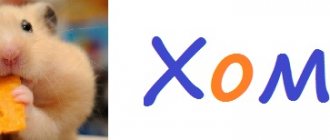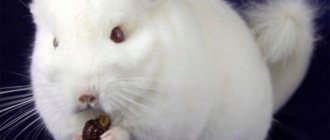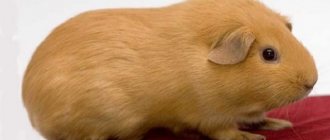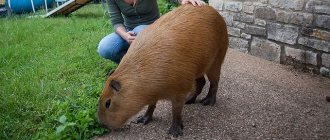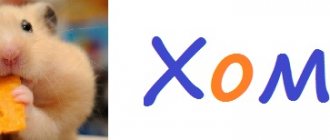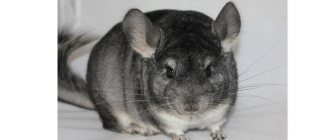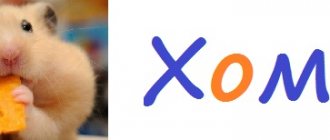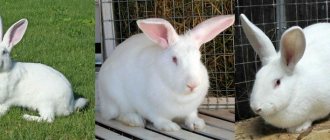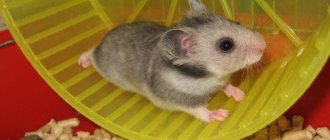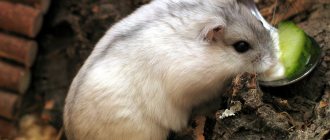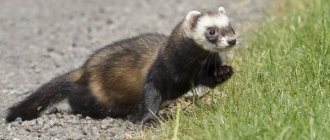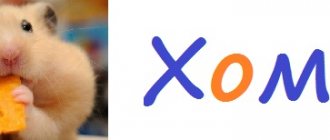The variety of hamsters often causes confusion in names. All breeds of hamsters can be classified into 19 species, which have their own characteristics. As a rule, these animals cannot tolerate their relatives. Animals should be kept separately to avoid bloody fights.
Hamsters are not as harmless animals as they might seem. In nature, these are dangerous animals that can even attack humans: the size of the animal’s opponent does not bother him. Wild hamsters can reach 34 cm and weigh over 700 g. If they settle near vegetable gardens, then this is a real disaster for the owners of the site.
In addition to provocatively aggressive behavior, wild representatives of this family can spread infectious diseases. This is another reason why you should choose domestic hamsters as pets.
Origin and habitat
The first mention of Djungarians dates back to the end of the 18th century. The German scientist and traveler Pallas described the animal that he encountered on the territory of the Dzungarian region (modern eastern Kazakhstan), initially calling it the Zungarian mouse due to its small size.
In the wild, hamsters prefer to live in deserts, dry steppes, and much less often in forest-steppes.
Their habitat is:
- Western Siberia.
- Northeast of Kazakhstan.
- Steppes of Mongolia, Korea and China.
- Central Asia and Altai.
The domestication of wild hamsters occurred in the 20th century. People fell in love with tiny pets, thanks to which the dwarfs spread throughout Eurasia. They can be found much less often in America.
Geographic nicknames
Giving the little prankster a name related to geographical features is a good idea. It is quite interesting and unusual to see the hamster Rechushka or Dzungarik. What other names can be used as a name for a boy or girl hamster?
- Junglik
- Syrian
- Vector
- Nile
- Equator
- Meridian
- Rio
- Memphis
Red Sun
- Altai
- Sahara
- East
- Southerner
- Karakumchik
- Viking
- Ankara
- Machu Picchu
- Big Ban
- Stone
- Zenith
- Don
- Crete
- Uranus
- Orion
Colors of Djungarian hamsters
Domesticated rodents, as a result of selection, have acquired a variety of colors, the features of which are a dark stripe and interspersed with light spots on the back, an almost white abdomen and paws. There are main types of colors of Djungarian hamsters.
Standard
The standard color resembles nature. In the wild, it helps animals camouflage against the background of sand and steppe plants. The standard calls for brownish-gray fur on the back and a dark or black stripe from head to tail. The abdomen and paws are white or light gray.
The standard color of the Djungarian hamster is natural.
Albino
Albinos have white fur and pink skin. They have red or pink eyes.
Sapphire
This coloration is characterized by a gray-blue back and a much lighter, to white, belly and paws.
The sapphire-colored hamster has a characteristic gray-blue back.
Pearl
Pearl hamsters have matte white fur with gray patches. Among them there are individuals with a uniform milky color without a stripe on the back.
Mandarin
It is a red color with a brown stripe on the back, with lighter legs and belly.
Mandarin is a red color with light legs and belly.
Nicknames for “warm” kids
Cute rodents evoke only pleasant associations. Their soft fur will definitely remind you of cozy warmth. Let's pick the warmest and most cozy names for red-haired babies.
We recommend watching: 365+ beautiful names for white, black and gray rats
Furcat on a walk
- Cashmere
- Ogonyok
- Warmer
- Sun
- Mitten
- Fluff
- Velvet
- Satinchik
- Sock
- Sparkle
- Volcano
- Magma
- Lava
- Geyser
- Jacuzzi
- Perinka
- Wool
- Furcatcher
- Furry
- Helios
- Fire
Features of white color
White dzhungarikas are no different from their relatives, except for their pearl coloring. Often there is no stripe at all on the back of these hamsters. In such cases, the animal is completely dull and milky. Pearly white hamsters are bred by breeders and are loved by breeders.
Albinos, due to a gene mutation, lack the pigment melanin, which is responsible for the color of their skin and coat. Their eyes are red because, in the absence of pigment, the blood vessels in the cornea become clearly visible. The lack of melanin negatively affects the health of hamsters.
The main problems of albinos:
- Skin diseases: lichen, dermatophytosis, tumors and papillomas.
- Vision problems: long-term exposure to sunlight on unprotected eyes can lead to blindness of the animal.
- Lack of melanin: reduces stress resistance of albinos.
The pet must be protected from contact with sunlight.
The cage with a special pet should be placed in a shaded place, protecting the animal as much as possible from contact with direct sunlight.
Popular names
Basically, breeders of these animals use simple and uncomplicated names. The most popular nicknames for red hamsters are:
- Alfred
- Baby
- Sturdy
- Roy
- Makeup
- Artie
- Crunch
- Masik
- Mouse
- Baby
- Mini
- Selma
- Sandra
- Marfa
- Krogglaz
- Mary
- Yarik
- Yuxie
- Fuchsia
- Citrus
- Citron
- Cent
- Jamon
- Frank
- Freddie
Beauty will save the world, but purity will save the hamster
- Reddy
- Orange
- Ryzhulik
- Flame
- Apricot
- Ruby
- Watercolor
- Bonita
- Cinnamon
- Red Up
- Timoshka
- Funkik
- Klepa
- Malinka
- Mango
- Saranka
- Nectar
- Zolotko
- Aurika
- Zvezdoka
- Lemon
- copperhead
- Rzhavka
- Pomegranate
- Lingonberry
Red Gourmand
- Ogonyok
- Golden
- Toshka
- Pie
- Kolobok
- Blush
- Vitamin
- Candied fruit
- Adamina
- Aiden
- Scarlet
- Akadama
- Aka
- Vern
- Tomatik
More names for female hamsters here.
Lifestyle of Djungarian hamsters
Adult Djungarians prefer to live alone. They are characterized by territorial division.
Hamsters' burrows are spacious, up to 1 m deep, with many branches and chambers. Separate rooms are equipped for sleeping, storing supplies, and toilets.
Hamsters sleep during the day and forage for food at dusk and at night.
The basis of the diet is:
- seeds, grains, leaves and roots of plants;
- small insects and worms;
- young shoots, berries and vegetables.
A hamster can walk several kilometers in search of food, and stores about 20 kg of food for the winter. Djungarians carry food in subcutaneous bags on the sides of the body.
Adult dwarfs live alone.
This species of the hamster family does not hibernate. In winter, the coat color becomes lighter and blends into the snowy landscape. By cold weather, the hamster's body acquires subcutaneous fat.
If the cold continues for a long time down to -10 °C or the animal experiences stress, then it falls into torpor, a state close to death when the body temperature drops to +20 °C. This is how hamsters minimize energy expenditure and survive.
Variety of species
In total, there are about 250 varieties of hamsters in the world; in our country, no more than one and a half dozen species of these funny animals are widespread. Here are just a few of them:
- Domestic or ornamental: common hamster;
- angora;
- Djungarian hamster;
- Sungursky;
- Taylor's dwarf;
- Roborovsky's hamster;
- Siberian, white hamster;
- Campbell;
- golden or Syrian hamster.
- Mongolian;
Among this fluffy splendor, there are also bald hamsters - the inquisitive minds of experimental geneticists have reached these cute pets.
Rodent character
Djungarian hamsters are militant introverts. They are sensitive to the protection of personal space. These cute rodents fiercely fight the enemy if he encroaches on their territory. They use teeth and claws, causing terrible wounds. Male Djungarians warn their relatives about the invasion of aliens with sharp sounds, standing on their hind legs.
Domesticated animals also like to live alone. Hamsters quickly get used to people, they willingly allow themselves to be picked up, they like gentle stroking and calm speech. They are inquisitive and nimble. If you make sudden movements and make frightening sounds, the hamster may scratch and bite.
“Nimble” nicknames
Hamsters are almost always on the move. Sitting still for a few moments is already a disaster for them. Therefore, their curious noses can be observed anywhere. For such lively creatures, names that emphasize their active lifestyle would be appropriate.
- Acrobat
- Mercury
- Shustrik
- Dancer
- Zinger
- Top
- Runner
- Shmyga
This is what running in a circle means - Shustrik explains clearly
- Bystrik
- Fidget
- Marathon runner
- Engine
- Reactor
- Atom
- Molecule
- Rapids waterfall
- Storm
- Hurricane
- Tsunami
- Typhoon
- Vortex
- Breeze
- Yula
- Teleport
- Racer
- Dynamo
- Accelerator
- AIDS
- Lightning
Briefly about caring for dzhungarika
In the wild, hamsters of this species live on average 1 year. If you follow simple rules for keeping dwarfs, their life expectancy in captivity can be on average 2 years, sometimes 3 and very rarely 4 years.
Selecting a cage and accessories
When choosing a cage, you should consider that:
- its area should not be less than 30x50 cm: the hamster needs enough space for an active life;
- high cages are dangerous for hamsters: the animals love to climb the bars, and falling from a height often leads to injury and death;
- It is not advisable to buy a multi-tiered cage with complex staircase structures: for Dzungarians such a home is dangerous for injury.
The hamster cage should have a large area.
The bottom of the cage is lined with special filler from a pet store. You can use sawdust from fruit trees and finely torn paper napkins and towels as available materials.
Pieces of fabric, cotton wool and hay should not be allowed to get into the cage.
The main accessories for arranging the cage are a running wheel and a rest house. The size of the wheel should be at least 18 cm in diameter to prevent curvature of the hamster's spine during running. It’s better to buy a house without windows - animals often get stuck in them.
Nutrition and diet
The basis of nutrition for domestic hamsters is balanced dry food from a pet store. As wet additives, you can offer your pet lettuce, parsley, cucumbers, and zucchini. If you are deficient in protein, lean pieces of boiled chicken help well.
Vegetables and fruits containing a lot of sugar are contraindicated for hamsters due to their predisposition to diabetes. Also, you should not treat your hamster to insects from the street, so as not to infect him with parasites.
The domestic hamster eats balanced dry food.
There should always be enough fresh water in a special drinking bowl. You cannot put a bowl of water in the cage. A wet hamster may get sick.
Necessary socializing and play time
Evening is the best time to communicate with pets. During the day you should not disturb hamsters - this is a time for rest and recuperation. Half an hour is enough to pamper your pet in your hands, clean the cage, and change the water. Then all that remains is to observe the behavior of the dwarf in the active phase of the day.
Number of individuals in one cell
Only one individual will live comfortably in one cage. If you house at least two, then both hamsters will constantly experience stress and fight, which will negatively affect their health and life expectancy.
The female is placed with the male only for mating, after which she goes to her cage.
Health and hygiene
A healthy hamster looks beautiful, behaves actively, communicates willingly, and has a good appetite.
There are not many conditions sufficient to keep a pet in good shape:
- fresh food and water;
- conditions for sufficient physical activity;
- purity;
- sole ownership of the cage;
- absence of sharp and loud sounds;
- location of the cage out of direct sunlight.
Djungarians clean themselves using their paws and tongue. You can pour fine sand from a pet store into a separate container. In such a “bath” hamsters love to tumble for a long time. The procedure helps them clean the body more thoroughly.
Roborovsky
This species is often called Robos. They are distinguished by their very small size, only 5 cm. The weight of the baby is 20-25 grams. Despite its small size, this hamster has a rather large head and a flattened muzzle. The ears are set high and round in shape.
The average life expectancy of a Roborovsky hamster is 3-4 years. This species is very shy and susceptible to stress, which significantly shortens their life.
Color: white, sand, grey. The muzzle is always white, regardless of the color of the coat.
They are rarely found at home. They are kept in special cages, since the distance between the bars of ordinary cages does not suit them.
